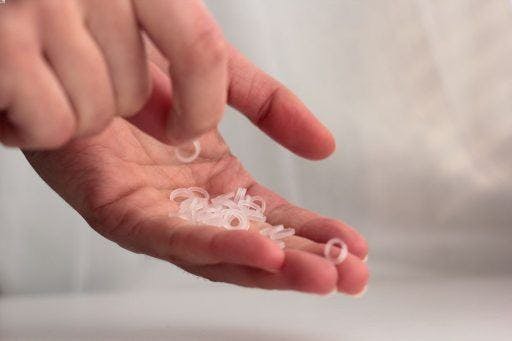Do you have a crossbite? One way to find out is by observing your smile. Do any of your upper teeth sit inside the bottom row when you bite? If so, you might have this malocclusion.
What is a crossbite?
With a crossbite, the edges of your teeth aren’t meeting where they should. Every time you chew or bite, the force transfers to the wrong surfaces and angles.
Crossbites can appear at the front or sides of the mouth, impacting one or multiple teeth. As a result, you might have eating difficulties, gum recession, and dental fractures. Severe toothache is another side effect of this condition.
Types of crossbites
The Australian Society of Orthodontics (ASO) identifies three main crossbite classifications:
Anterior crossbite

An anterior crossbite occurs when one or more upper front teeth (incisors and canines) are positioned behind the lower front teeth. This misalignment can affect the appearance and function of your bite.
Posterior crossbite

In a posterior crossbite, the upper back teeth sit inside the bottom back teeth. The ASO notes that posterior crossbites are more difficult to notice as they occur at the back of the mouth.
Bilateral crossbite

A bilateral crossbite is present when the crossbite occurs on both sides of the mouth. If the crossbite affects only one side, it is called a unilateral crossbite.
Causes of a crossbite
Various factors can contribute to the development of crossbites. According to the Australian Dental Association (ADA), “anterior and posterior crossbites are caused by dental or skeletal discrepancies, or a combination of the two.”
Here are the underlying factors:
- Genetics
- Prolonged harmful habits like thumb sucking and excessive pacifier use
- Atypical swallowing patterns
- Delayed loss of baby teeth
- Abnormal eruption of adult teeth
- Cleft lip and palate
When to treat a crossbite?
It’s best to address malocclusions as soon as possible to prevent complications. That’s partly why children and adolescents are ideal candidates for orthodontic treatment. Since their jaws are still developing, they’re also more receptive to adjustments. However, that doesn’t mean it’s too late for adults. Remember – there’s no age limit for orthodontics.
If you notice frequent occurrences of jaw pain and speech problems related to your crossbite, it might be time to see a dentist. Like most misalignments, leaving it untreated can increase your risk for tooth decay and gum disease.
How to fix crossbite teeth

Here are the treatment options for a crossbite:
Expanders
For posterior crossbites, the ADA recommends a fixed or removable expander to widen the upper jaw and improve dental alignment. This device is fitted across the palate and gradually adjusts the jaw.
Dental plates
Removable dental plates are often recommended for anterior crossbites. These plates use springs behind the front teeth to gently push them into the correct position.
Braces
Traditional braces, consisting of metal wires and brackets, are effective for treating anterior crossbites. They apply continuous pressure to gradually move teeth into alignment.
Clear aligners
Removable aligners, like ClearCorrect, are equally effective in treating various malocclusions. Plus, you can take them off at any time. These aligners are also more discreet than braces, thanks to their clear and stain-resistant plastic material.
ClearCorrect‘s unique combination of patented ClearQuartz tri-layer material, high and flat trimline, and scientifically proven clinical features promise precision and comfort. These aligners are also more resistant to stains compared to other brands.
If you’d like to know if you’re a candidate for ClearCorrect, take this online smile assessment.
According to Esthetic Dentistry: A Clinical Approach to Techniques and Materials (Third Edition), “The correction of a single-tooth crossbite is very effective with clear aligners due to the ability of the plastic to disocclude the jaws.” The aligner shields the affected tooth and keeps it from reverting to its original position. As it moves, the opposing tooth moves in the opposite direction until the two meet evenly.
Of course, you’ll still need to consult your dentist to determine which treatment will work for your case. The position of your teeth and the severity of the condition will be taken into consideration.
Do you need elastics to treat a crossbite?

Along with aligners, your dentist may recommend elastics as part of your treatment plan. They may add slits or bonded buttons to your aligners for the rubber bands to “hook” onto. These elastics provide additional support for complex tooth movements and assist in improving bite alignment.
Here’s an example of how it works. If the affected teeth need to move forward, elastics can add extra pull force to make it happen. Meanwhile, the aligners push the rest back until all teeth are aligned correctly. That push-and-pull can lead to a more seamless – and, in some instances, speedy – result.
Of course, not all cases of crossbites will require elastics for their resolution. Ultimately, the decision to use them will depend on your assessment. Collaborate closely with your dentist so you get the best outcome possible for your teeth.
References:
De Almeida, R. R., De Almeida, M. R., Oltramari-Navarro, P. V. P., De Castro Ferreira Conti, A. C., De Lima Navarro, R., & Marques, H. V. A. (2012). Posterior crossbite – treatment and stability. Journal of Applied Oral Science, 20(2), 286–294.
Esthetic dentistry. (n.d.). ScienceDirect.
The Australian Society of Orthodontics. (2022a, August 6). How orthodontists correct a crossbite in Australia. Orthodontics Australia. https://orthodonticsaustralia.org.au/fix-a-crossbite
Ugolini, A., Agostino, P., Silvestrini-Biavati, A., Harrison, J. E., & Batista, K. B. (2021). Orthodontic treatment for posterior crossbites. Cochrane Library, 2021(12).



